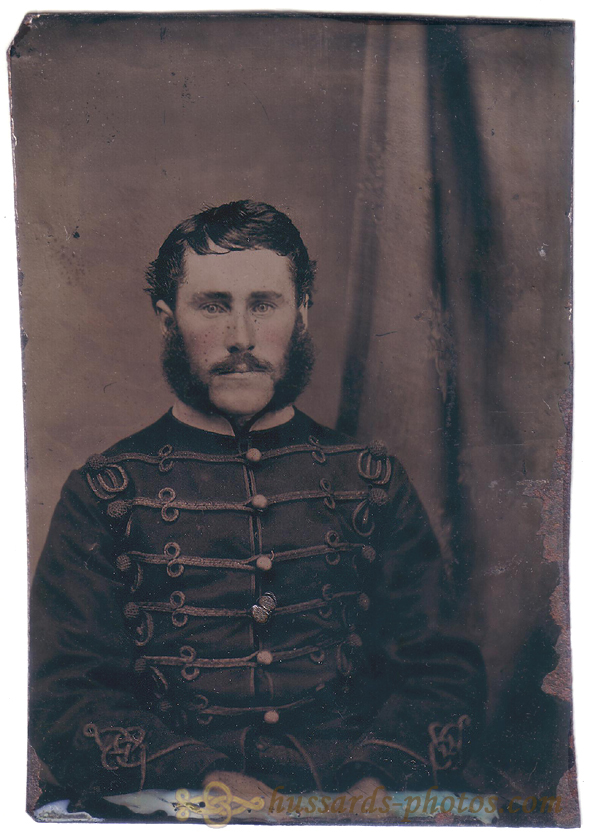|
The 13th
hussars left for Canada in 1866 ; the Times of September 13th 1866 relates :
"The Cunard steamers Tarifa and Europa, which have been
completely overhauled and refitted for the reception of the 13th
Hussars, left the Mersey yesterday at 2 p.m. for Quebec.
The Tarifa has on board 13 officers, 182 men, and 172 horses. The
officers are Lieut.-Col. Jenyns, C.B. ; Capts. Clarke, Innes, and
Hill ; Lieuts Ford, Clay, and Webb ; Cornets Hamilton, Pole, and
Ellis ; Lieut. and Adjt. Joyce, Surg. Armsrong, and Vet.-Surg.
Varley. The Europa conveys 13 officers, 144 men, and 131 horses.
The officers are Major Maclean ; Capts. Atkinson, Huddleston, and
Miles ; Lieuts. Starkey, Higgins, and Horne ; Cornets Bieber and
Moore ; Paymaster Frith, Riding-master Hubbard, Quartermaster
Cresdee, and Assist.-Surg. Milburn. To-day, at 9a.m., the Allan
steamer will go alongside the great landing-stage and take on
board nine officers and 153 dismounted men of the same regiment,
and detachments for other corps, to the number of about 240, and
sail about noon. These vessels also take out several hundred tons
of military stores."
They will
reach Quebec on September 26th, "all well, the Europa
having lost two and the Tarifa 16 horses on the voyage".
The
Regiment had been sent to Canada following the unrest due to the Fenian
activists (mostly demobilized soldiers of Irish extract, fighting
the British presence in Canada), trouble that led the Governor
general to request Regular Cavalry troops - the lack of which had
been exposed in the previous operations.
The 13th Hussars will be mainly quartered in Toronto (Fort York).
During their tour, they will open a School of Cavalry there, that
will train local Cavalry Troops.
This will create a lasting heritage, as Canadian Cavalry regiments
will adopt a uniform after that of the Regiment, a tunic of Hussar
pattern with white facings (though most will sport pith helmets).
The 13th
Hussars will sail back to England in August 1869 ; The Times
relates, on August 14th : "Yesterday the troopship Simoom
arrived in the Mersey from Quebec, and landed the 13th Hussars,
consisting of 19 officers, 7 officers' wives, and 10 officers'
children, 403 men, 71 women, and 103 children. In the course of
the day the troops left for York, and the Simoom at once proceeded
to take on board the 15th Hussars, from York, and will take them
round to Portsmouth, en route for Chichester, whence they will
shortly leave for India."
Cased
tintypes were quite popular in the late 1860s in North America.
They indeed offer a depth of view that's sometimes stunning.
The images were often, as is the case here, cased like
Daguerreotypes and Ambrotypes had been.
It is to be noted that the photographic process produces a
reverted image, as can be seen from the position of the
buttonholes.
It cannot
be discounted that this image would depict a private from
one of the Canadian Cavalry Regiments, who as said earlier adopted
the uniform of the13th Hussars.
It is not however very likely, as this cased picture really
is in the style of the mid-1860s.
|


